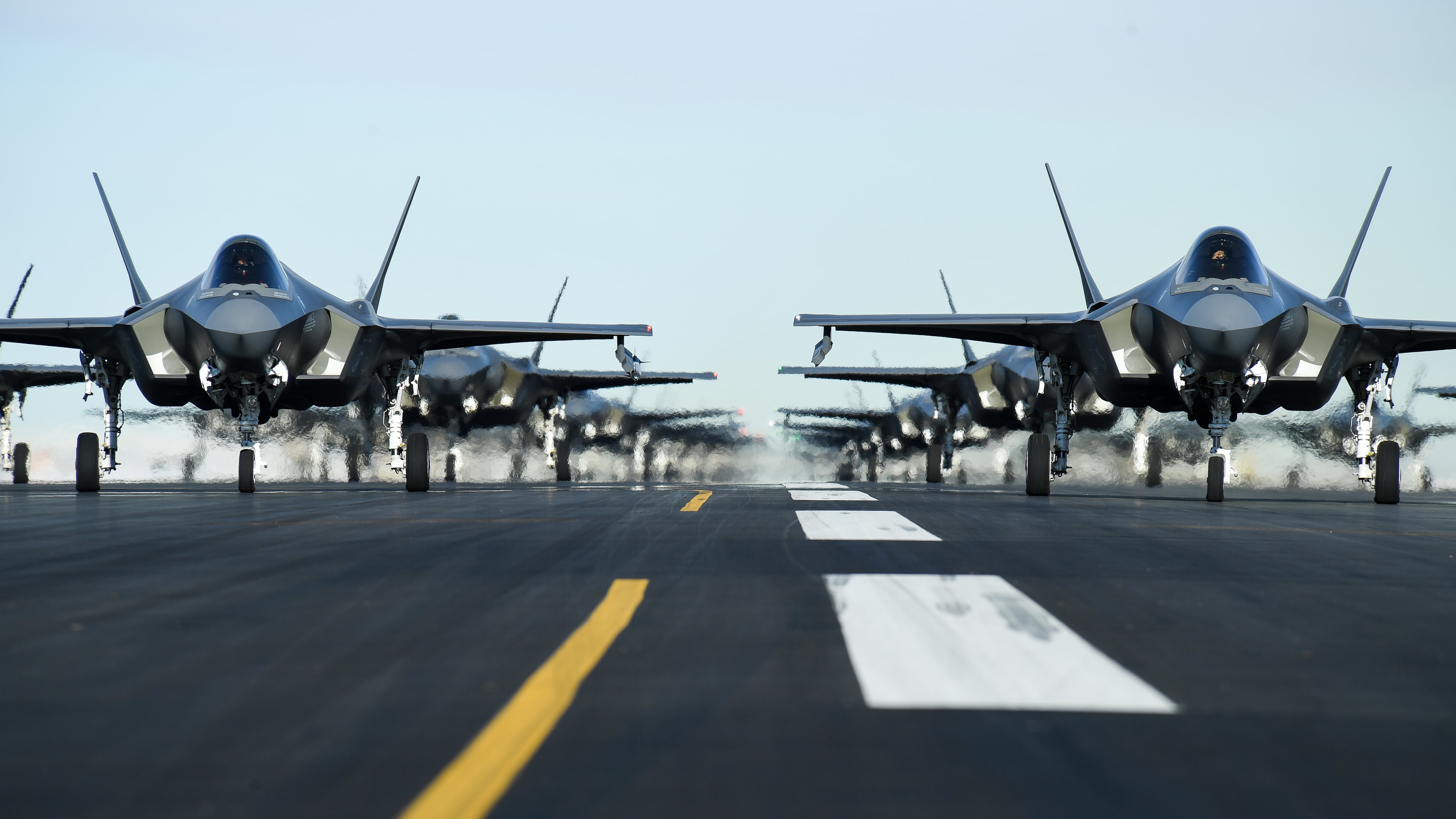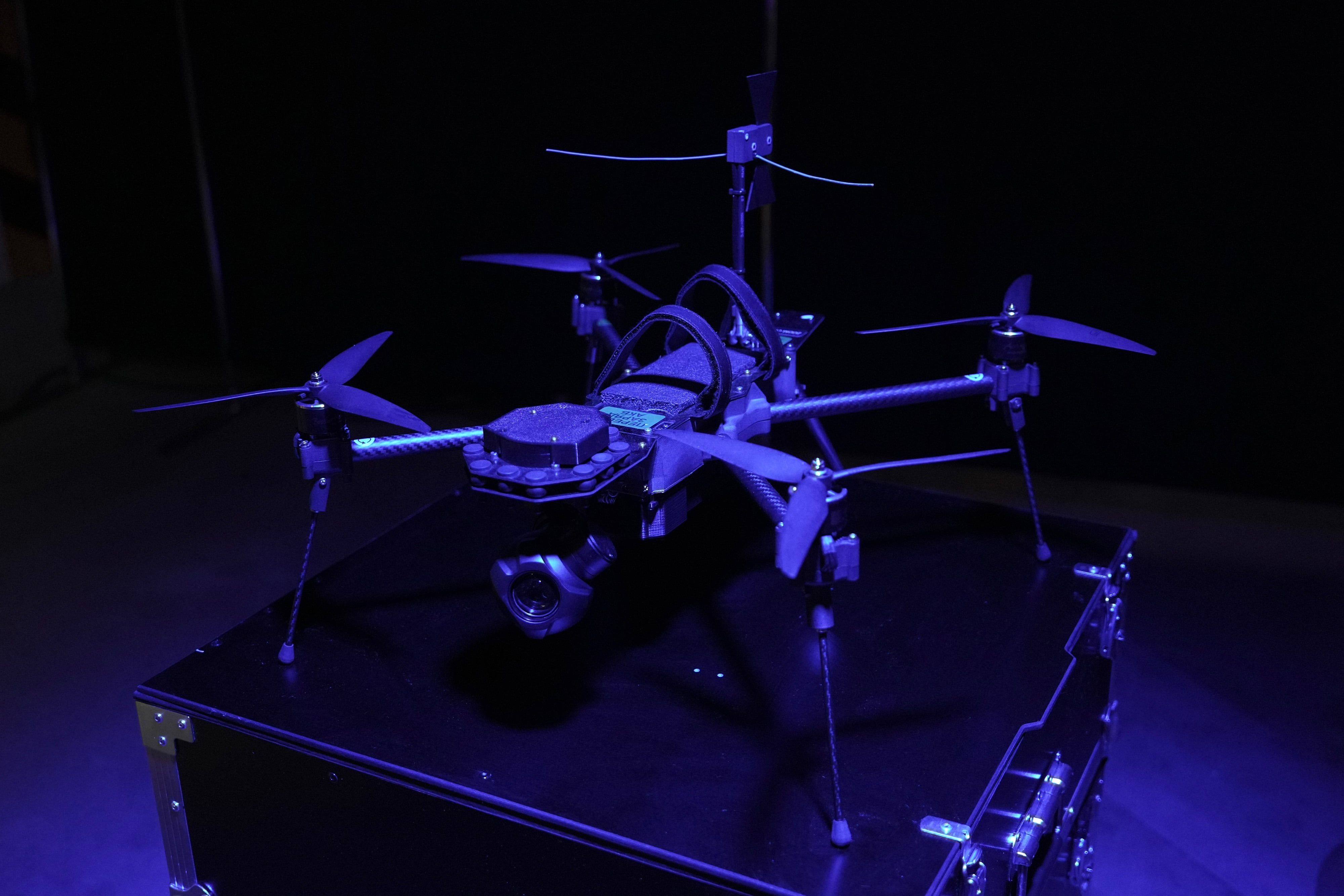STUTTGART, Germany — Defense observers have increasingly seen fifth-generation wireless technology, or 5G, as a key civilian-developed technology that will provide next-generation connectivity and more unified network management to troops around the globe.
Cyril Dujardin, senior vice president and global head of digital security at France-based Atos, shared his perspective on how 5G will transform the European defense sector in an interview with Defense News. This interview was edited for length and clarity.
Where does Atos see the most opportunity for 5G technologies to improve and transform the European defense sector in the next one to five years?
Beyond the performance improvement compared to 4G, what is disruptive about 5G is that it allows for the combining of multiple services, and covers the entire frequency spectrum through one single and unified technology. The world of defense has every interest in seizing this technology. Some examples of technologies aggregated in 5G, which could be interesting for the military world:
- Integrated access and backhauling (IAB), or the convergence of the radio access (the link between the user equipment and base station) and the backhauling (the link between the base station and the core network).
- Multi-hop configurations: User equipment can serve as relays for other user equipment, which could be interesting in a situation where a mobile is not in direct contact with the base station.
- Proximity services: 5G is an enabler for better implementation of proximity networking technologies, such as device-to-device transmission, vehicle-to-everything transmission, etc. That can be of great interest in the context of collaborative combat.
- “MIMO” technologies: 5G opens the field for massive Multiple-Input Multiple-Output applications, especially in millimeter waves. These technologies allow, for example, beam-steering in the desired direction of transmission for better discretion.
- Multi-Access Edge Computing (MEC): 5G allows for an optimized implementation of the MEC concept, that allows local applications to interact with the network. This opens the field for a global optimization of services, and to reach for example very low latency.
Lots of applications defined for civilian use cases can be adapted to the military sector. On the other hand, the adaptation of these applications to the military domain requires the consideration of specific constraints, such as: resistance to jamming; resilience (if a base station disappears, another one is needed), resistance to physical, electromagnetic and cybersecurity attacks.
Finally, 5G is a technology that is naturally made to work in a virtualization model and in the cloud. This is key, as the field of defense is seeing the emergence of combat cloud initiatives such as the Multi-Domain Operations Cloud (MDOC).
RELATED

What are the technological challenges or limitations that companies like Atos still need to overcome to unlock these capabilities for defense and military customers?
5G is a technology coming from the “civilian” domain. Any civilian technology requires adaptations so they can be rolled out and adopted in the military world. 5G technology must be resilient, as well as resist jamming and all types of attacks (physical, electromagnetic, cybersecurity). This adaptation process necessitates a plan, a strategy, and strong investments, and also depends upon technological building blocks.
In the network, there are two separate parts: the “core network” with many disparate actors, and the “radio access network” (RAN) which consists of base stations. For RAN, the system is not very open, with only a few actors on the market. In this context, the “Open-RAN” initiative aims to cut this large RAN function into several small pieces to allow many small players to intervene.
In an Open RAN model, you can build your 5G solution with more and more bricks from different players. This approach will promote the diffusion of 5G technologies in the world of defense. The military could implement their specificities at a lower cost without going through the “big players” who might not be interested in military needs.
Individual countries and organizations like NATO have zeroed in on the importance of “emerging and disruptive technologies.” How have your conversations with potential and existing customers around these topics evolved over the past few years?
Above all, we note that there is a European dimension emerging. It is becoming harder and harder for France or other European countries to develop their own national defense solutions without a European system – we are moving towards collaborative models.
The European Defense Fund – linked to the European Defense Agency and created in 2017 – has been provided with significant, although still not sufficient, resources and gives the opportunity to create a solid European defense ecosystem. Atos participates in European or international defense projects and proposes new projects.
Last year, Atos and Thales created a new joint venture, Athea, to develop a new sovereign, big-data and artificial intelligence platform. What are the plans for this platform, and for Athea as a whole in 2022?
2022 follows the launch of Athea, with the consolidation of the joint Atos and Thales teams, which are now working on a dedicated campus. Through Athea, Atos and Thales are currently working on the “ARTEMIS” program – optimizing, and preparing the full-scale roll-out of the big data platform of the French Ministry of Armed Forces. At this stage, the first version of the platform is being deployed.
For now, Athea serves the “sovereign” bi- data and AI market, as a priority in France. In the near future, Athea will address the European and international market. Athea aims to manage several projects and clients and aims to address both public and private players.
Which national or multinational European defense projects will Atos be focusing on in the next several years for cloud computing technologies? For battlefield communications technologies?
Atos is currently involved in several European projects for space, for the protection of public spaces, and for chemical, biological, radiological and nuclear (CBRN) risks. We also work on research and development topics related to the space domain.
Atos has been awarded a contract by the European Space Agency to develop a product to improve the cybersecurity of electrical ground support equipment (EGSE) platforms, which test the electrical system of satellites before they are being launched. As cyber risks no longer stop at terrestrial borders, Atos will focus on building systems that prevent and counter cyber-attacks seeking to take control of, or to damage satellites or testing equipment during the testing phase.
We also support “new space” programs such as the OneWeb mega constellation program. Atos provides OneWeb Satellites with the testing equipment for satellites, optimizing the process while drastically reducing the environmental footprint of the testing phase.
When it comes to battlefield communication technology, we must understand that there are two types of armies: those doing external operations (France, U.S., Russia, U.K., etc.) and those protecting their own countries. Countries whose armies are involved in external operations need to have their own battlefield-communication technologies, which must exist in autonomy. In this context, national armies must innovate and develop their own systems, collaborating with private partners like Atos.
In France, Atos is providing the French Army with SICS, the command-and-control information system for the SCORPION program. The aim of the SICS command system is to deliver, in an immediately comprehensible form, relevant information to the person who will have to decide and lead the action. SICS allows for tasks to be automated and to be made transparent to the user, through human-machine interaction adapted to operational needs. Through the CaMo [Motorized Capacity] contract on French-Belgium cooperation, Belgium is now adopting the SICS communication system developed by Atos.
Vivienne Machi is a reporter based in Stuttgart, Germany, contributing to Defense News' European coverage. She previously reported for National Defense Magazine, Defense Daily, Via Satellite, Foreign Policy and the Dayton Daily News. She was named the Defence Media Awards' best young defense journalist in 2020.








